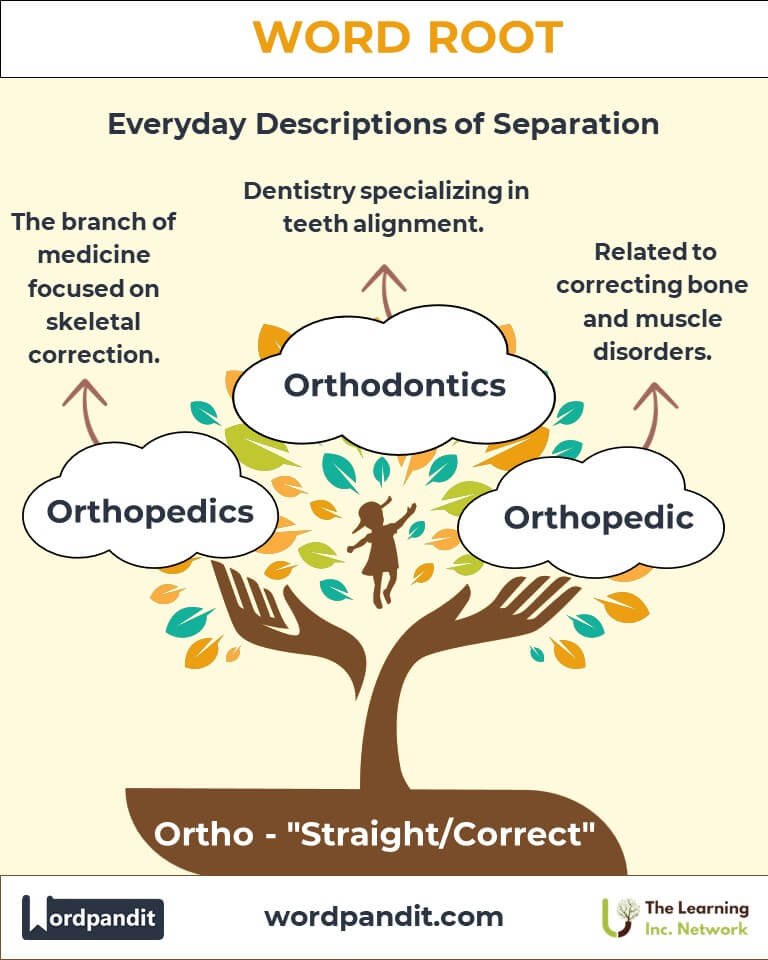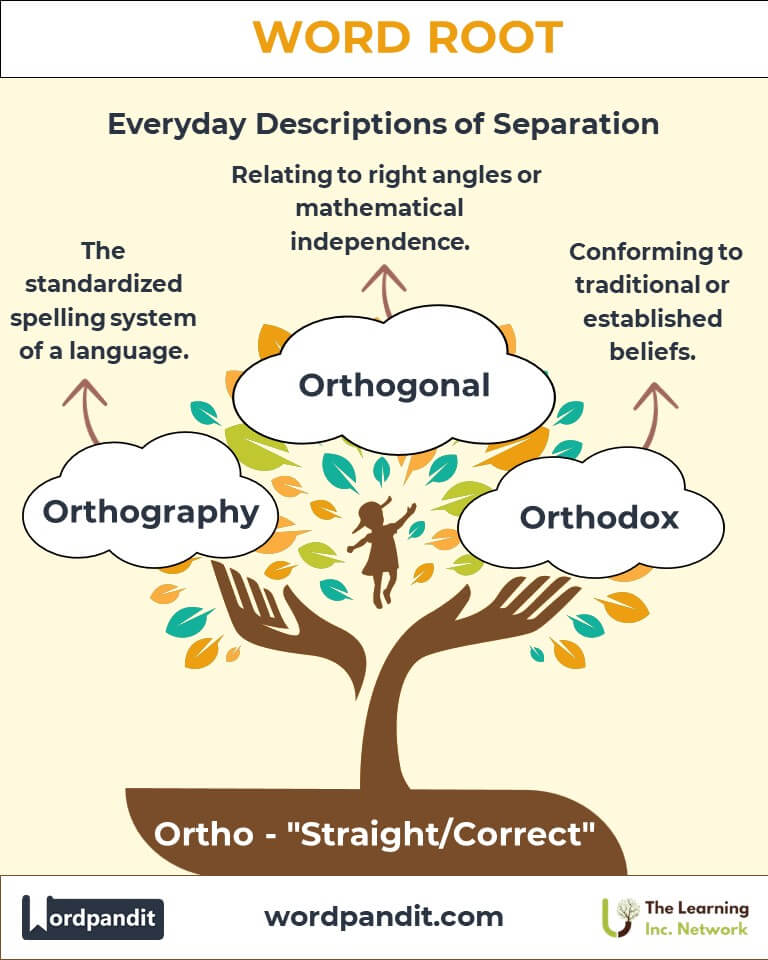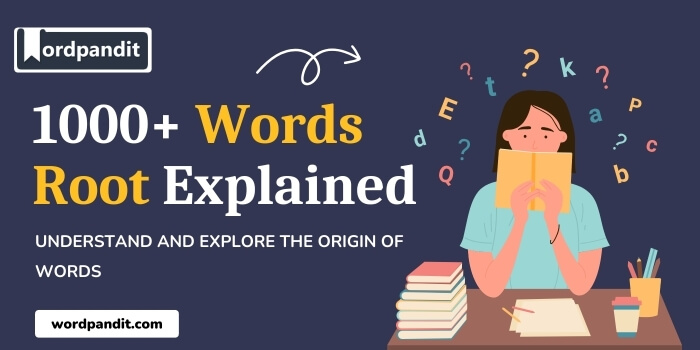Ortho: The Root of Straightness and Correctness
Byline:
Discover the fascinating journey of the root "ortho," derived from Greek, meaning "straight" or "correct." From orthopedics to orthodox, this root has shaped language and ideas in fields as diverse as medicine, religion, and geometry.

Table of Contents
- Introduction: The Essence of "Ortho"
- Etymology and Historical Journey
- Mnemonic: Unlocking the Power of "Ortho"
- Common "Ortho"-Related Terms
- "Ortho" Through Time
- "Ortho" in Specialized Fields
- Illustrative Story: "Ortho" in Action
- Cultural Significance of the "Ortho" Root
- The "Ortho" Family Tree
- FAQs about the "Ortho" Root
- Test Your Knowledge: "Ortho" Mastery Quiz
- Conclusion: The Straight Path of "Ortho"
Introduction: The Essence of "Ortho"
The root "ortho," pronounced "or-thoh," originates from the Greek word orthos, meaning "straight" or "correct." It has carved its significance in language, emphasizing alignment, correctness, and precision. Whether addressing skeletal alignment in orthopedics or proper beliefs in orthodoxy, "ortho" lays the foundation for accuracy and order in various disciplines.

Etymology and Historical Journey
"Ortho" stems from ancient Greek, where orthos signified straightness and rectitude, both in physical and metaphorical senses. Over centuries, it found its way into Latin and, subsequently, English, often denoting correctness or alignment. During the Enlightenment, "ortho" gained prominence in scientific and medical lexicons, reflecting humanity's quest for precision and truth.
Mnemonic: Unlocking the Power of "Ortho"
Imagine a ruler labeled "ORTHO" that straightens crooked lines with a magical touch, symbolizing correction and alignment.
Mnemonic Device: "Ortho keeps it straight and right, from beliefs to bones in sight!"
Common "Ortho"-Related Terms
- Orthodox: Conforming to traditional or accepted standards.
Example: "The community adhered to orthodox practices passed down for generations." - Orthopedic: Pertaining to the correction of skeletal deformities.
Example: "The orthopedic surgeon specialized in treating spinal disorders." - Orthodontics: The branch of dentistry dealing with teeth alignment.
Example: "Orthodontics can transform a misaligned smile into a perfect one." - Orthography: The conventional spelling system of a language.
Example: "Learning orthography is essential for mastering written English." - Orthogonal: Relating to right angles or independence in mathematics.
Example: "The two vectors are orthogonal, forming a perfect 90-degree angle."
"Ortho" Through Time
- Orthodoxy (Ancient): Rooted in early religious traditions, it signified adherence to correct beliefs.
- Orthopedics (Modern): Coined in the 18th century, it combined "ortho" (straight) and "paideia" (child-rearing), reflecting its origins in correcting children's skeletal issues.
- Orthogonal (Contemporary): Expanded from geometry to represent conceptual independence in data and functions.
"Ortho" in Specialized Fields
- Medicine:
- Orthopedics: Focuses on diagnosing and treating skeletal deformities.
Example: "Orthopedic implants help restore mobility to injured patients."
- Orthopedics: Focuses on diagnosing and treating skeletal deformities.
- Dentistry:
- Orthodontics: Enhances oral health and aesthetics through teeth alignment.
Example: "Braces are a common orthodontic solution for malocclusion."
- Orthodontics: Enhances oral health and aesthetics through teeth alignment.
- Religion:
- Orthodoxy: Maintains traditional doctrines in faith and practices.
Example: "Orthodox teachings remain central to many religious traditions."
- Orthodoxy: Maintains traditional doctrines in faith and practices.
- Mathematics:
- Orthogonal: Describes independence or perpendicularity in geometry and statistics.
Example: "Principal component analysis relies on orthogonal transformation."
- Orthogonal: Describes independence or perpendicularity in geometry and statistics.
Illustrative Story: "Ortho" in Action
Dr. Priya, a dedicated orthopedic surgeon, was approached by Anya, a young gymnast with a spinal deformity. Using advanced techniques, Priya realigned Anya's spine, allowing her to return to her beloved sport. Meanwhile, Anya’s twin, Arjun, visited an orthodontist to correct his misaligned teeth. United by the root "ortho," these fields helped the siblings reclaim their confidence and aspirations.
Cultural Significance of the "Ortho" Root
"Ortho" symbolizes humanity's pursuit of truth and order. From the orthogonal designs of ancient Greek temples to the orthographic reforms of modern languages, its influence spans cultures and epochs. Religiously, orthodoxy reflects the enduring relevance of tradition and correctness in belief systems.

The "Ortho" Family Tree
- Rect- (Latin: "straight"):
- Rectangle: A shape with straight sides.
- Rectify: To correct.
- Reg- (Latin: "rule"):
- Regulate: To control or maintain order.
- Regimen: A systematic plan or routine.
- Line- (Latin: "line"):
- Linear: In a straight line.
- Align: To arrange in a straight line.

FAQs About the "Ortho" Word Root
Q: What does the root "ortho" mean?
A: The root "ortho" comes from the Greek word orthos, meaning "straight" or "correct." It is commonly used to signify alignment, order, or correctness in various contexts.
Q: What is orthopedics?
A: Orthopedics is a branch of medicine that focuses on diagnosing, treating, and preventing disorders related to the musculoskeletal system, including bones, joints, and muscles. The term combines "ortho" (straight) and "paideia" (child-rearing).
Q: What does orthodoxy mean?
A: Orthodoxy refers to adhering to established, traditional beliefs or practices, especially in religion or ideology. For example, "orthodox Christianity" emphasizes maintaining foundational teachings of the faith.
Q: How does "ortho" relate to mathematics?
A: In mathematics, "ortho" appears in terms like "orthogonal," which describes two lines or vectors that intersect at right angles (90 degrees). It also signifies independence in data sets or concepts.
Q: What is orthodontics, and how does it help?
A: Orthodontics is a specialized field of dentistry focusing on diagnosing and correcting misaligned teeth and jaws. Treatments like braces improve oral health, function, and aesthetics.
Test Your Knowledge: "Ortho" Word Root Quiz
1. What does the root "ortho" signify?
2. Which field addresses skeletal corrections?
3. What does "orthography" study?
4. What does "orthogonal" mean in geometry?
5. What does "orthodox" mean?
Conclusion: The Straight Path of "Ortho"
The root "ortho" exemplifies the pursuit of correctness and alignment across diverse fields. From straightening bones to preserving traditions, its applications highlight humanity's enduring commitment to precision and truth. As society evolves, "ortho" continues to guide our efforts to stay true and aligned, reminding us of the value of straightness in thought, action, and form.












